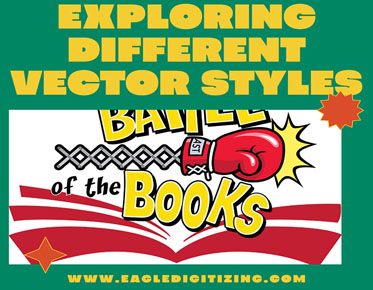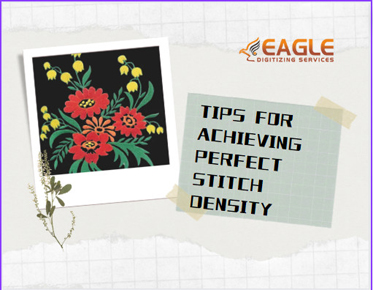Serigraph or Print: Spotting the Key Differences
In the realm of art, printmaking, and serigraphy hold esteemed positions, both celebrated for their unique qualities and creative potential. While they share commonalities, each medium offers distinct attributes that define their significance and appeal. This article delves into the nuanced world of printmaking and serigraphy, unraveling their histories, techniques, materials, and much more.
Historical Background
Origins of Printmaking
Printmaking traces its roots back to ancient
civilizations, with the earliest examples found in China around 220 AD. The
advent of woodblock printing revolutionized the dissemination of information
and art. By the 15th century, Europe embraced printmaking, spurred by the
invention of the Gutenberg press. This period marked the rise of renowned
printmakers who etched their legacies into history.
The Evolution of
Serigraphy
Serigraphy, or screen printing, emerged later, gaining prominence in the 20th century. Initially used for commercial purposes, it quickly captured the attention of artists seeking new expressive avenues. The Pop Art movement, championed by luminaries like Andy Warhol, catapulted serigraphy into the artistic mainstream, solidifying its status as a legitimate art form.
Defining Printmaking
What Constitutes a
Print?
At its core, a print is an artwork created by
transferring ink from a matrix onto a surface, typically paper. The matrix,
which can be a metal plate, woodblock, or lithographic stone, is the artist's
canvas. The resulting image is a mirror of the design carved, etched, or drawn
on the matrix.
Common Techniques in
Printmaking
Printmaking encompasses various techniques, each with its unique characteristics. Relief printing, including woodcuts and linocuts, involves carving away parts of the matrix to leave raised areas that hold the ink. Intaglio techniques, such as etching and engraving, require incising into the matrix, with the ink held in the recessed lines. Lithography and screen printing further diversify the printmaking landscape.
Defining Serigraphy
What is Serigraphy?
Serigraphy, synonymous with screen printing, involves convert art to vector through a stencil-based process. A screen, traditionally made of silk, is stretched over a frame. Ink is then forced through the screen onto the substrate, with the stencil blocking out areas to create the desired image.
The Art of Screen
Printing
Screen printing's versatility lies in its ability to produce vibrant, layered images on various surfaces, from paper and fabric to metal and glass. The process allows for bold, graphic designs and subtle, intricate details, making it a favored medium for both artists and commercial designers.
The Materials Used
Printmaking Materials:
Paper, Ink, and Tools
Printmaking requires specific materials to
achieve desired results. High-quality paper, resistant to warping and ink
absorption, is crucial. The ink, whether oil-based or water-based, must
complement the chosen technique. Tools range from carving knives and burins to
brayers and printing presses, each playing a vital role in the creation
process.
Serigraphy Materials:
Screens, Stencils, and Inks
In serigraphy, the screen, made from synthetic fibers like polyester, is paramount. Stencils, crafted from various materials such as paper or emulsion, dictate the image's design. The inks, often thicker and more vibrant than printmaking inks, must be compatible with the substrate to ensure durability and colorfastness.
The Process Explained
Step-by-Step Guide to
Printmaking
- Design Creation: The artist crafts a
design on the matrix using tools suited to the chosen technique.
- Ink Application: Ink is applied to
the matrix, filling recessed areas or coating raised surfaces.
- Transfer: The inked matrix is
pressed onto the paper, transferring the design.
- Drying: The print is carefully dried to prevent smudging and ensure longevity.
How Serigraphy Works: A
Detailed Look
- Screen Preparation: A screen is
stretched tightly over a frame and coated with a light-sensitive emulsion.
- Stencil Creation: The design is
transferred onto the screen through exposure to light, hardening the
emulsion and leaving the stencil.
- Ink Application: Ink is placed on
the screen, and a squeegee is used to force it through the stencil onto
the substrate.
- Curing: The printed material is
cured, often using heat, to set the ink.
Artistic Techniques
Techniques in
Traditional Printmaking
Traditional printmaking techniques include
etching, where acid is used to create designs on a metal plate, and woodcut,
involving carving an image into a wooden block. These methods allow for fine
detail and textural variations, showcasing the artist's skill and creativity.
Techniques Unique to
Serigraphy
Serigraphy techniques often involve layering multiple colors through successive screens, creating complex, vibrant images. The ability to print on diverse materials and produce large editions makes it a favored method for creating posters, apparel, and fine art prints.
Visual Differences
Identifying a Print: Key
Characteristics
Prints are often characterized by visible plate
marks, especially in intaglio methods, and the texture of the paper. The ink
application varies, with some techniques producing rich, velvety lines and
others yielding more textured, painterly effects.
Recognizing a Serigraph:
Unique Features
Serigraphs are notable for their bold colors and clean lines. The layered ink can create a tactile surface, with areas of thicker ink standing out. The uniformity and precision of the print are hallmarks of the screen printing process.
Uses and Applications
Printmaking in Art and
Commercial Use
Printmaking has a storied history in fine art,
with artists like Albrecht Dürer and Rembrandt mastering the medium. It also
has practical applications in book illustrations, posters, and textiles,
demonstrating its versatility and enduring relevance.
Serigraphy in Fashion,
Art, and Design
Serigraphy shines in the fashion industry, where it's used to create unique patterns on fabrics. Artists like Warhol popularized its use in fine art, while designers leveraged its capabilities to produce eye-catching graphics on everything from apparel to home decor.
Famous Artists and Works
Renowned Printmakers and
Their Masterpieces
Printmaking boasts an illustrious roster of
artists. Albrecht Dürer, with his intricate woodcuts, and Francisco Goya, known
for his haunting etchings, are just two of the many who have left an indelible
mark on the medium.
Iconic Serigraphs and
Their Creators
Serigraphy owes much of its fame to artists like Andy Warhol, whose Marilyn Monroe prints are iconic. Roy Lichtenstein's comic book-inspired works also exemplify the creative potential of screen printing.
The Value and Collectibility
Evaluating Prints:
Factors Affecting Value
The value of a print is influenced by factors
such as the artist's reputation, the edition size, and the print's condition.
Limited editions and works by renowned artists tend to fetch higher prices in
the art market.
The Market for
Serigraphs: What Collectors Look For
Collectors of serigraphs seek works that showcase the artist's unique style and technique. Provenance, edition size, and the quality of the print are critical considerations in determining a serigraph's value.
The Role of Technology
Technological Advances
in Printmaking
Advances in technology have revolutionized
printmaking, with digital tools allowing for precise design and reproduction.
Contemporary artists often blend traditional techniques with digital processes to
push the boundaries of the medium.
Modern Innovations in
Serigraphy
In serigraphy, innovations like automated presses and eco-friendly inks have expanded possibilities. Digital screen printing merges the precision of digital design with the tactile quality of traditional screen printing.
Advantages and Disadvantages
Pros and Cons of
Printmaking
Printmaking offers the advantage of producing
multiple originals, making art more accessible. However, the process can be
labor-intensive and requires a high level of skill and technical knowledge.
Benefits and Drawbacks
of Serigraphy
Serigraphy is prized for its versatility and vibrant results. The ability to print on various materials is a significant benefit. However, setting up screens and stencils can be time-consuming and requires meticulous preparation.
Environmental Impact
Sustainability in
Printmaking
Sustainable printmaking practices include using
non-toxic inks and recycled paper. Artists and printmakers are increasingly
mindful of their environmental footprint, seeking methods that minimize harm.
Eco-friendly Practices
in Serigraphy
Eco-friendly serigraphy involves using water-based inks and reclaiming screens for reuse. Innovations in biodegradable materials and sustainable production techniques are paving the way for greener practices in the industry.
DIY: Getting Started
Beginner’s Guide to
Printmaking at Home
Starting printmaking at home requires basic
materials like linoleum blocks, carving tools, and ink. Online tutorials and
beginner kits can help novices explore this rewarding art form.
Starting Your Own
Serigraphy Projects
For those interested in serigraphy, starter kits with screens, squeegees, and inks are available. DIY enthusiasts can experiment with simple designs and gradually advance to more complex projects as they gain confidence and skill.
Popular Misconceptions
Common Myths About
Printmaking
A common myth is that prints are merely copies
and lack originality. In reality, each print is a unique work of art, with
variations that reflect the artist's hand and technique.
Debunking Serigraphy
Myths
One misconception about serigraphy is that it’s solely for commercial use. While it’s true that vectorizing artwork has commercial applications, it’s also a respected art form used by many celebrated artists.
Caring for Your Art
How to Preserve Prints
Vector graphics converter should be handled with care, avoiding direct sunlight and humidity. Using archival materials for framing and storage can significantly extend the life of a print.
Maintaining and
Displaying Serigraphs
Serigraphs, like all artworks, require proper care. Displaying them behind UV-protective glass and in controlled environments helps preserve their vibrant colors and structural integrity.
The Future of Print and Serigraphy
Trends and Predictions
in Printmaking
The future of printmaking lies in the fusion of
traditional methods with digital innovations. Artists will continue to explore
new techniques, pushing the boundaries of what can be achieved on paper.
The Evolving World of
Serigraphy
Serigraphy is set to evolve with advancements in technology and materials. Sustainable practices and digital integration will shape its future, making it more accessible and environmentally friendly.
Printmaking and serigraphy, while distinct, share
a rich heritage and limitless potential. Each medium offers unique techniques,
materials, and applications, captivating artists and collectors alike. As these
art forms continue to evolve, they will undoubtedly inspire future generations
to explore and create, leaving an indelible mark on the art world.



